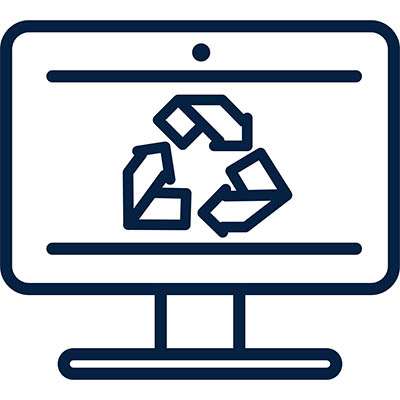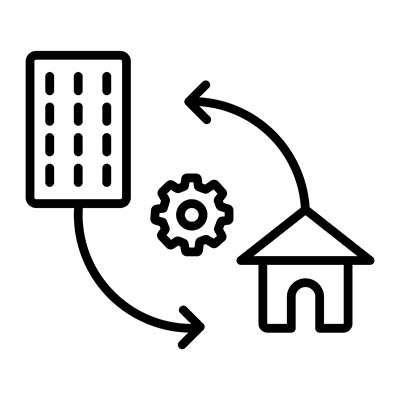Macro Systems Blog
Adopting smart office technology—from connected lighting and thermostats to sophisticated monitoring sensors—can enhance your workspace, offering efficiency and a modern aesthetic. Yet, as IT experts, we must guide you past the shiny facade to confront a critical reality: every new smart device is a potential gateway for cyber threats.
You should not have to sacrifice security for the sake of being "high-tech." That being said, implementing these solutions without a robust security strategy is a risky gamble.
Technology doesn’t last forever, so what would you do if your keyboard or computer monitor died tomorrow? Some might just throw the technology in the trash and not think twice about it, but that’s the exact opposite of what you should do. Instead, Macro Systems urges you to go through the proper channels to properly dispose of your old electronics—if not for the environment’s sake, then for your business’.
If one fact has been proven true, it’s that remote and hybrid work are not temporary trends, they're future operating models that help businesses achieve greater flexibility and talent retention. Of particular interest is hybrid work, an approach that mixes the demands of in-office work with the advantages and flexibility of remote work. If you want to build hybrid work into your operational infrastructure, there can be no denying that your IT infrastructure has to be locked in—especially if you want to stay productive, secure, and competitive.
Listed below are the benefits and risks of hybrid work as an operational model for your business.
There are a bunch of shortcuts that most of us should already know: cut, copy, paste, new tab, things like that. These are the basics. That being said, if you really want to show off for the boss—blowing them away with your efficiency and professionalism—some more advanced options are also handy to know.
Listed below are some shortcuts to take advantage of:
Despite the immense productivity and convenience that come from using a smartphone, it’s imperative to remember that these devices are miniature computers in our pockets. This means that they are just as susceptible to threats as a computer or laptop. According to the National Security Agency, powering down your device is one of the most effective ways to protect your smartphone from various threats. Listed below is why.
From the classic Nigerian Prince emails to the cleverly crafted fake invoice, malicious digital correspondence is a constant threat to a business. It's not just about losing a few dollars. A successful phishing attack can cripple your operations, compromise sensitive data, and even lead to your organization's demise.
One of the most popular criticisms of generative AI tools is that they often “hallucinate,” or make up information, making them a bit unreliable for certain high-stakes tasks. To help you combat hallucinations, we recommend you try out the following tips in your own use of generative AI. You might find that you get better, more reliable outputs as a result.
Remember the stereotypical hacker? A single kid in a hoodie, fueled by caffeine and curiosity, breaking into a system just for the thrill or bragging rights? That image is obsolete. Modern hacking has evolved from a counter-cultural movement into a sophisticated, multi-trillion-dollar global industry.
It would seem that the people responsible for the recent heist at the Louvre, which netted over $101 million in jewelry, may have utilized a more complicated plan than strictly necessary. According to a French publication, the famous museum has a long history of cybersecurity mistakes and faux pas… many of which, given the museum’s fame, are truly shocking.
Listed below is what we know about the Louvre’s protections over the years, and what they suggest about the current state of things. Hopefully you'll learn a thing or two by doing so.
An old fable says that a frog placed in a pot of boiling water will jump out immediately, but if the water is warmed to boiling with the frog already in it, the frog won’t notice until it is already too late. Many modern businesses act like that frog, overlooking minor tech problems that signal a growing issue until the damage is done.
Let’s see if we can identify some of these issues to help keep you out of hot water.
We’ve seen firsthand how the shift to remote work has revolutionized business operations. That being said, one area that still causes friction for many business owners is virtual meetings. A poorly executed remote meeting isn't just a time-waster, it can also drain productivity and disengage your team, damaging your company culture. Listed below are a few tips that show that with the right strategy and tools, your remote meetings can be even more effective and engaging than their in-person counterparts.
With AI entering the mainstream, more businesses are implementing these tools into their daily operations. Tasks like drafting emails, brainstorming for a new project, or debugging code have all been made easier. Here’s the secret to making the most out of AI: you get out what you put in. What do we mean by this? Let’s find out.
Happy Halloween! Tonight, ghosts and goblins will collect candy from door to door. This is to be expected; less expected are the cyberthreats and attacks that darken the doors of today's businesses of all shapes and sizes.
Listed below are things you need to do to keep your business safe, inside and out, every night of the year.
Artificial intelligence is a hot topic these days; most businesses are utilizing it for a multitude of things. With everyone all-aboard the AI train, it’s easy to confuse the computational power and speed AI offers to be infallible. Alas, AI can get things going sideways if you aren’t careful. When it does go wrong, the consequences can be more than just an inconvenience.
Listed below are some of the most important ways AI can go wrong:
Pop culture has given us a vivid, if often frightening, impression of artificial intelligence. When we hear AI, many still picture calculated malice: a HAL 9000, a Skynet, or an Ultron.
The real potential of AI is far more productive; it's less about calculating world domination and more about becoming your organization's most helpful collaborator. Think of it as a JARVIS for your executive team or an R2-D2 for your operational staff: a powerful tool that assists your team in generating ideas, solving complex problems, and completing high-volume tasks. Critically, maximizing this potential doesn't require new hardware; it requires sharpening the very soft skills we already value in our top performers: curiosity, empathy, and resilience.
What goes through your head when you hear the words “IT audit?” Are you concerned about your business’ deepest and most shameful technology secrets being exposed, or are you excited about the opportunity to resolve issues that you might not even know exist? We hope you have the latter mentality, as it’s the appropriate one, especially if you want to build a business that stands the test of time.
It’s convenient for employees to reuse passwords just to make things easier for themselves; why use different passwords when you have a dozen accounts to remember passwords for? Alas, this habit will come back to bite you, especially if your business is ever involved in a data breach. These credentials could end up for sale on the dark web… and that’s just the beginning of your problems.























